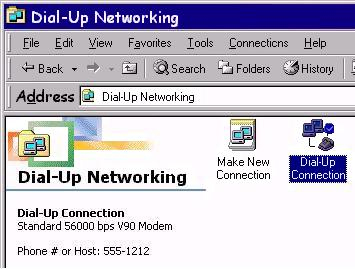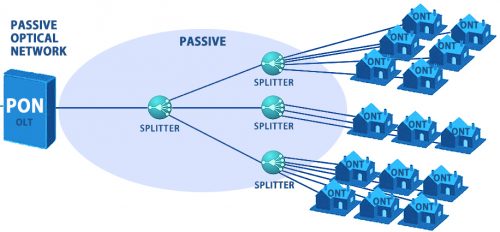
Purpose Drives Technology Forward
 If you are old enough, there is no way you will ever forget unplugging the cord of your phone and into the back of a dial-up modem. The bing bing bzzzz of the modem as it ‘shook hands’ with the carrier, and the anticipation of hopefully, because it was always tenuous, being connected to the World Wide Web – the Internet. It took immense patience (the maximum transfer speed at that time was 56 Kbps, if you were lucky), but eventually, a screen on your computer would magically appear. From there you could actually surf the web for anything of interest. It seemed like if you had the time and patience, the world was literally at your fingertips. It was exhilarating and fun, but slow and tedious, and often ended in frustration.
If you are old enough, there is no way you will ever forget unplugging the cord of your phone and into the back of a dial-up modem. The bing bing bzzzz of the modem as it ‘shook hands’ with the carrier, and the anticipation of hopefully, because it was always tenuous, being connected to the World Wide Web – the Internet. It took immense patience (the maximum transfer speed at that time was 56 Kbps, if you were lucky), but eventually, a screen on your computer would magically appear. From there you could actually surf the web for anything of interest. It seemed like if you had the time and patience, the world was literally at your fingertips. It was exhilarating and fun, but slow and tedious, and often ended in frustration.
Fast-forward to today. It’s nearly impossible to conceptualize the evolution of that primitive dial-up modem to the incredibly advanced technology that we depend on for so many of the essential components of our lives that we now take for granted. All technology is born out of purpose, and there is no better example of this than the Internet – human interconnectivity, the various ways that we all communicate with each other and seek to advance our knowledge. Believe it or not, all of this has led us to one primary technology: The incredible advantages of fiber optics and networking, and how like all technologies, it is evolving for our benefit. And there is no end in sight for the power of light traveling through glass cable.
No Power Required: The Evolution of the Passive Optical Network (PON) Continues to Adapt
As fiber optics evolved, so did the backbone of the fiber optic network. After all, there has to be a way for everyone to interconnect in a way that takes advantage of all of the benefits of fiber optics. It gets a bit complicated but PON technology originated in the 1990s and has continued to develop through multiple iterations with differing wavelengths, speeds, and components emerging as the technology has evolved and improved.

Between the OLT and ONT: No power is required
The common denominator of all fiber optic PONs remains the unpowered or passive state of the fiber and its splitting or combining components. There are no active components such as optical amplifiers, which would require power present in the network. This is the key to the unlimited broadband potential of a Passive Optical Network. A PON uses unpowered fiber optic splitters to enable a single optical fiber to serve multiple end-points such as customers instead of providing individual fibers between the central office (hub) and the customer.
According to different terminations of PON, the optical network can go as far as fiber-to-the-curb (FTTC) which gets it close, fiber-to-the-building (FTTB) which gets it closer, and fiber-to-the-home (FTTH) which brings it all the way to or into the home or office of the end user. In this case, you can have fiber from end to end, maximizing the potential of fiber optics.

As mentioned, PON technology is ever-evolving, and to get to where we are now, we have gone through various types of PON topologies, briefly:
- APON – Its full name is Asynchronous Transfer Mode (ATM) Passive Optical Network. This was the original PON system.
- BPON – BPON, also known as Broadband PON, is the improved version of APON. It adopts Wavelength Division Multiplexing (WDM) for downstream transmission. It also provides multiple broadband services such as ATM, Ethernet access, and video distribution.
- EPON – EPON or Ethernet PON uses Ethernet packets instead of ATM cells. Upstream and downstream rates of EPON are able to achieve up to 10 Gbps. It is now widely applied to FTTP or FTTH architecture to serve multiple users. With the advantages of scalability, simplicity, multicast convenience, and the capability of providing full-service access.
- GPON – Gigabit PON is the turbo version of BPON. GPON is considered the standard PON version in use today, with networks covering distances of up to 25 miles (40 km), depending on the split ratio, over single-mode fiber. Downstream wavelength is configured to 1490nm with upstream wavelength at 1310nm, with a downstream speed of 2.4 Gbps and 1.2 Gbps upstream. GPON is also commonly used for FTTH networks.

Basic PON architecture: OLT <–> Splitter <–> ONT
It doesn’t stop there. At this point, we have only scratched the surface of PON technology because it has evolved beyond mere GPON. Now there is:
- XG(S)PON – The maxi-turbo version of GPON. The ‘X’ in XGPON represents the number 10 and is a non-symmetrical 10 Gbps PON version that supports speeds of 10 Gbps downstream and 2.5 Gbps upstream – note the up and downstream speeds are different, thus the term non-symmetrical. Adding the letter ‘S’, which stands for Symmetrical, and you have XGSPON which is a 10 Gbps Symmetrical PON, meaning 10 Gbps downstream and 10 Gbps upstream.
Maybe this will make things clearer:
| Specification | GPON | XGPON | XGSPON |
| Max Speed Downstream | 2.488 Gbps | 9.953 Gbps | 9.953 Gbps |
| Max Speed Upstream | 1.244 Gbps | 2.488 Gbps | 9.953 Gbps |
| Max Distance | 37 miles (60 km) | 62 miles (100 km) | 62 miles (100 km) |
| Max Split Ratio | 1:128 | 1:256 | 1:256 |
As PON evolves, new and more advanced equipment is used on both ends of the fiber optic networks. On the transmit side there is the OLT, or Optical Line Terminal, and on the received/retransmit side (or customer/end-user), there is an ONT, or Optical Network Terminal (or ONU, Optical Network Unit). The ONT is the modern version of that old dial-up modem, acting as the device that receives downstream data and retransmits data upstream to and from the user. Multicom stocks XGSPON OLTs and ONTs that can be integrated into today’s most sophisticated optical networks.
What is on the Horizon?
Even more capacity and higher speeds, of course. Looking beyond XGSPON there is NGPON2 which utilizes Wavelength Division Multiplexing (WDM) with multiple 10 Gbps wavelengths, both up and downstream, to deliver a symmetrical 40 Gbps service. NGPON2 uses different wavelengths of GPON and XGSPON to allow for service to co-existence on the same PON.
As PON technology continues to evolve and improve, the strategic and economic advantages of PON deployment will become more compelling. As speed demands continue to increase year over year, the evolution of the PON will continue to adapt. XGPON, XGSPON, and NGPON2 will provide an upgrade path to the future of PON technology that is currently beyond our capabilities – but not beyond the capabilities of fiber optic cable, which gave birth to the term ‘future-proof’. This natural evolution will help to continue the expansion of Passive Optical Networks into the smart cities, universities, hospitals, and corporations that make up the connected world of today and tomorrow.
How Does PON Get from Point A to Point B, and Back?
We have covered a lot about fiber optic networks and how they have evolved in a way that increases capacity and speed. But in this article, we have only touched on the equipment involved. To learn more about PON products and how they interact, please see:
- GPON Network Components – Taking a Closer Look at GPON Networks – Take a closer look at how a GPON OLT device deployed in a typical GPON network delivers services to end users by way of a GPON ONT installed inside the premise or home.
- Migrating from GPON to XGS-PON and NGPON2 – Today bandwidth scalability from GPON to XGS-PON, and even NGPON2 services are key drivers when selecting GPON OLT and ONT products – which not only future-proof your investment, but provide a quick ROI.
